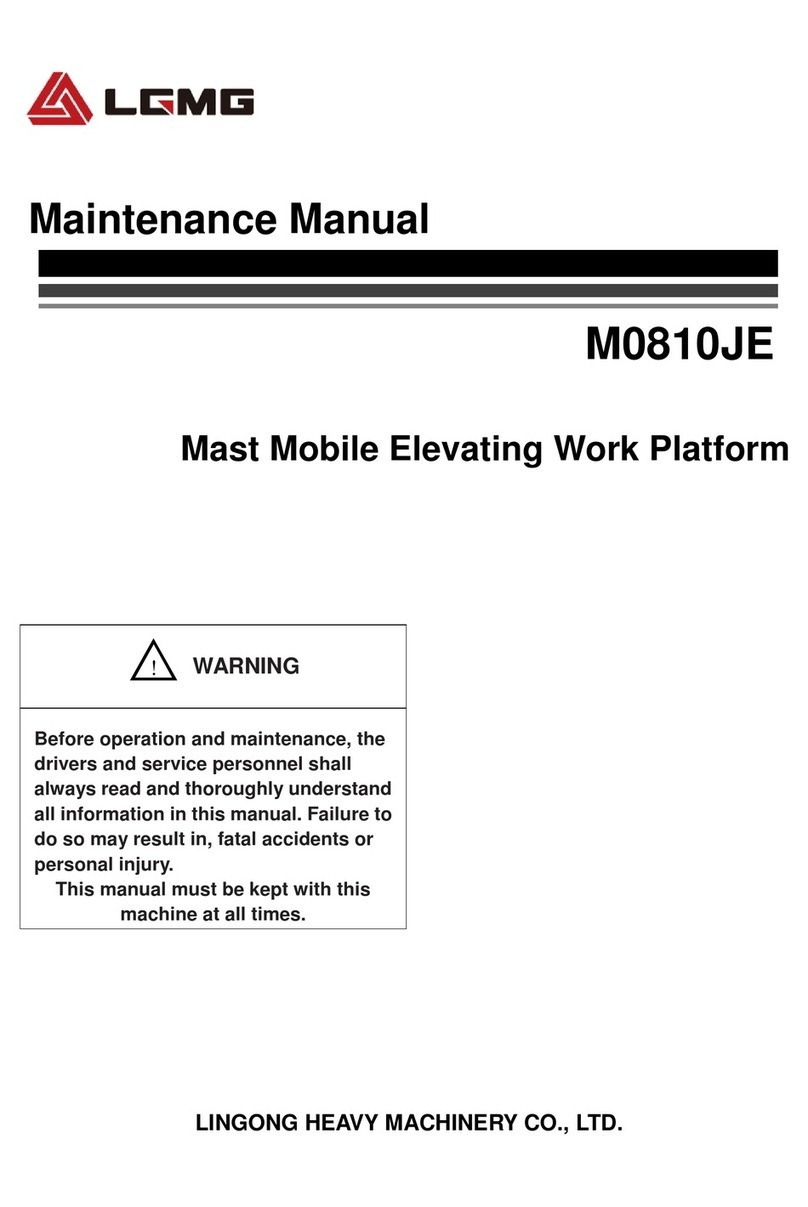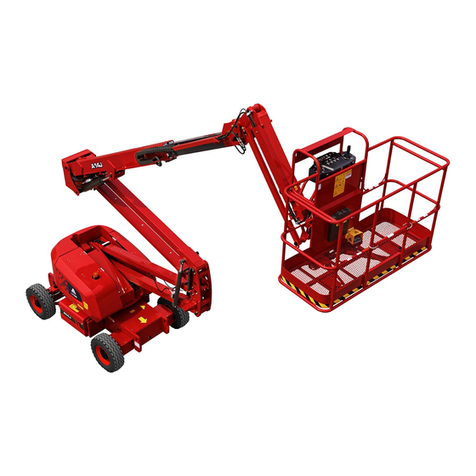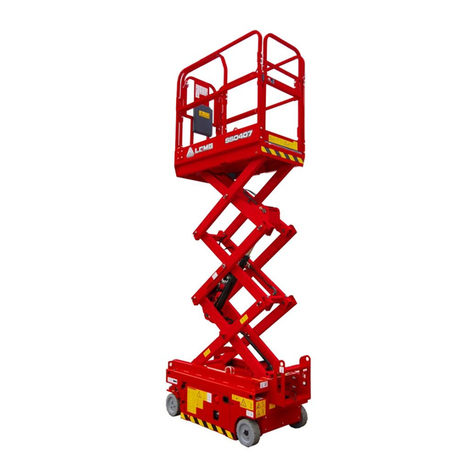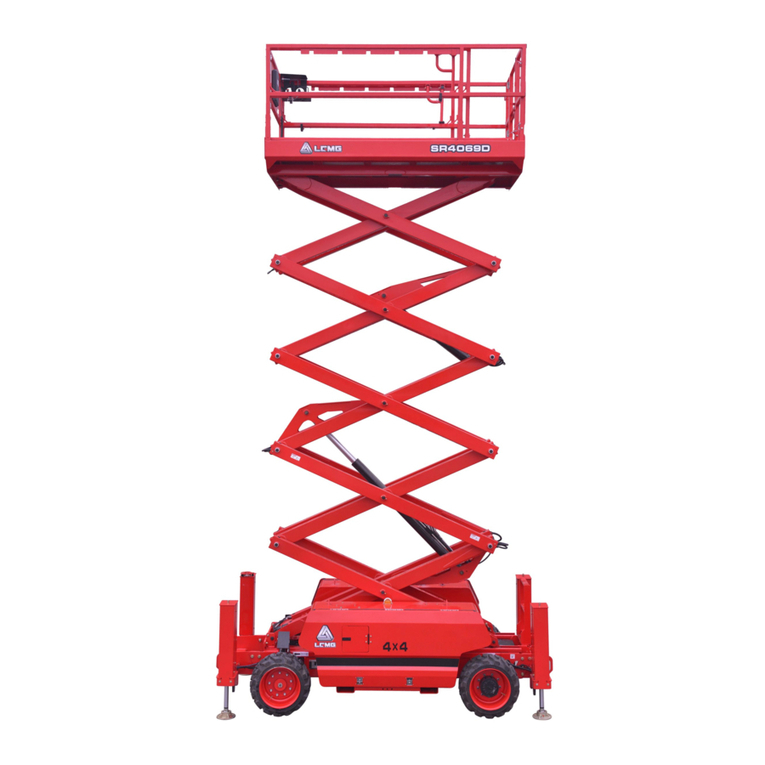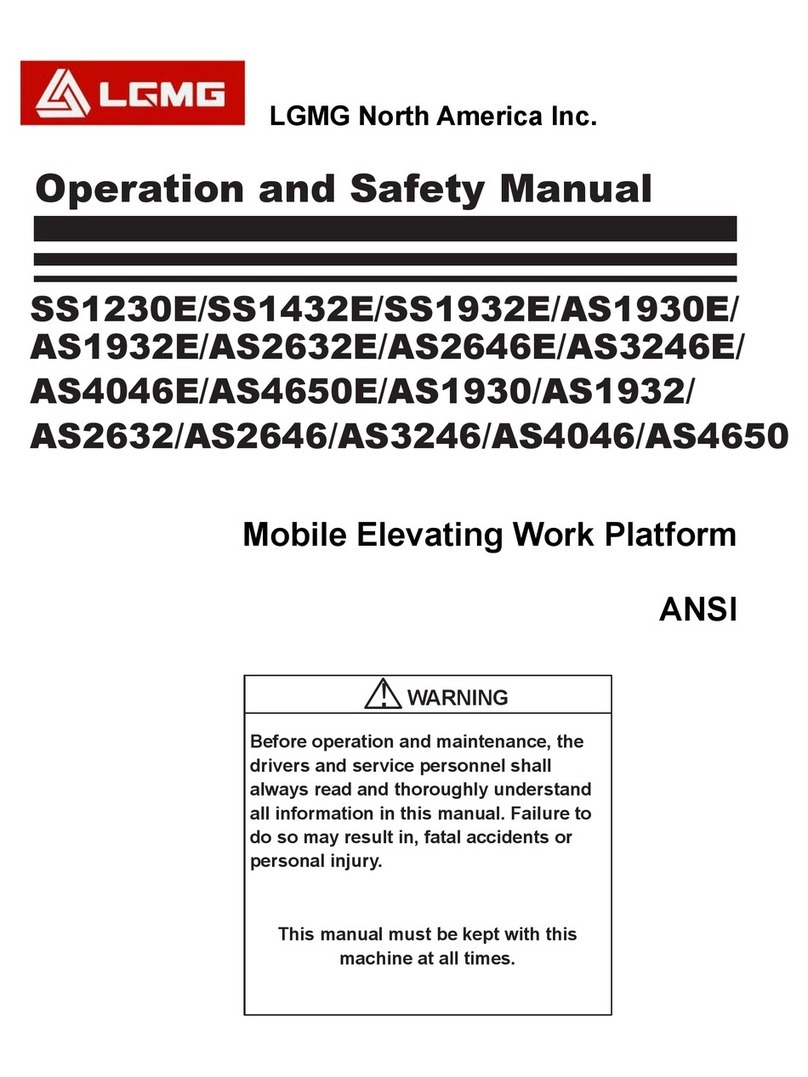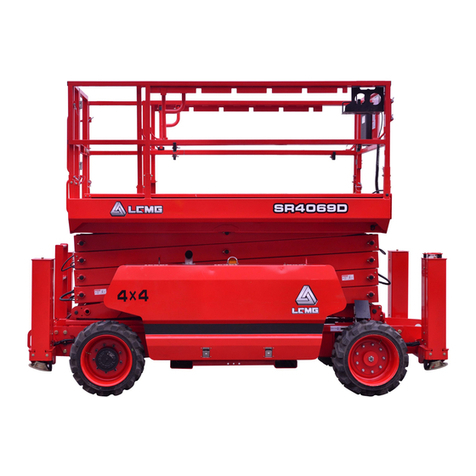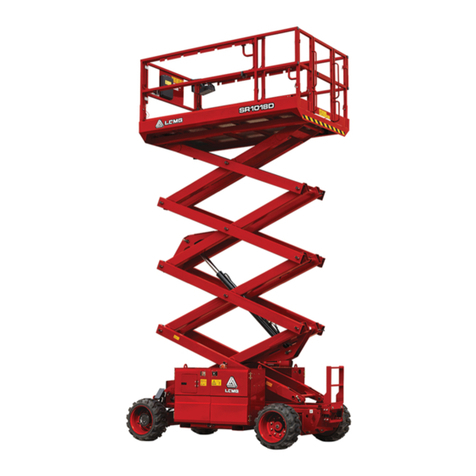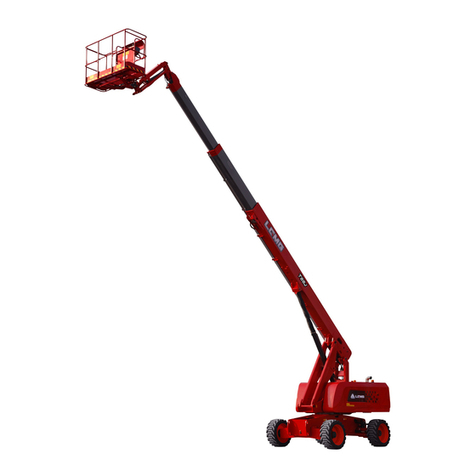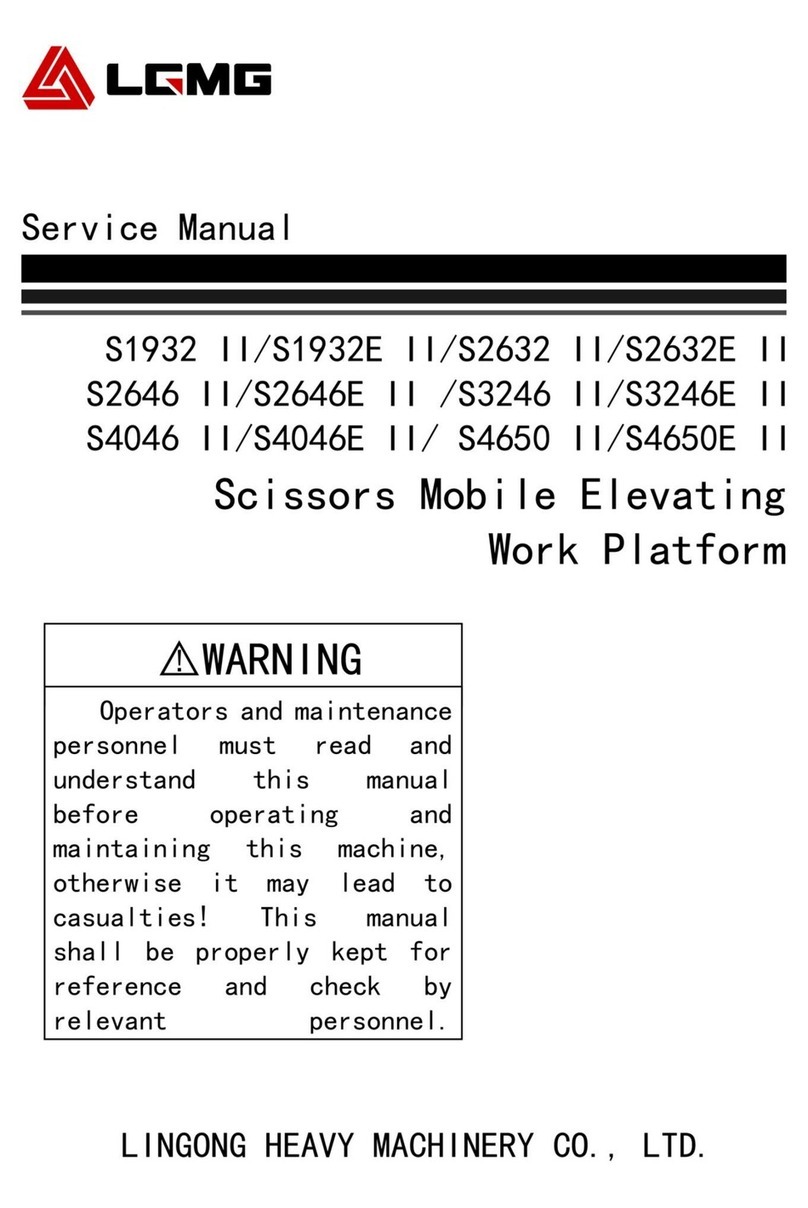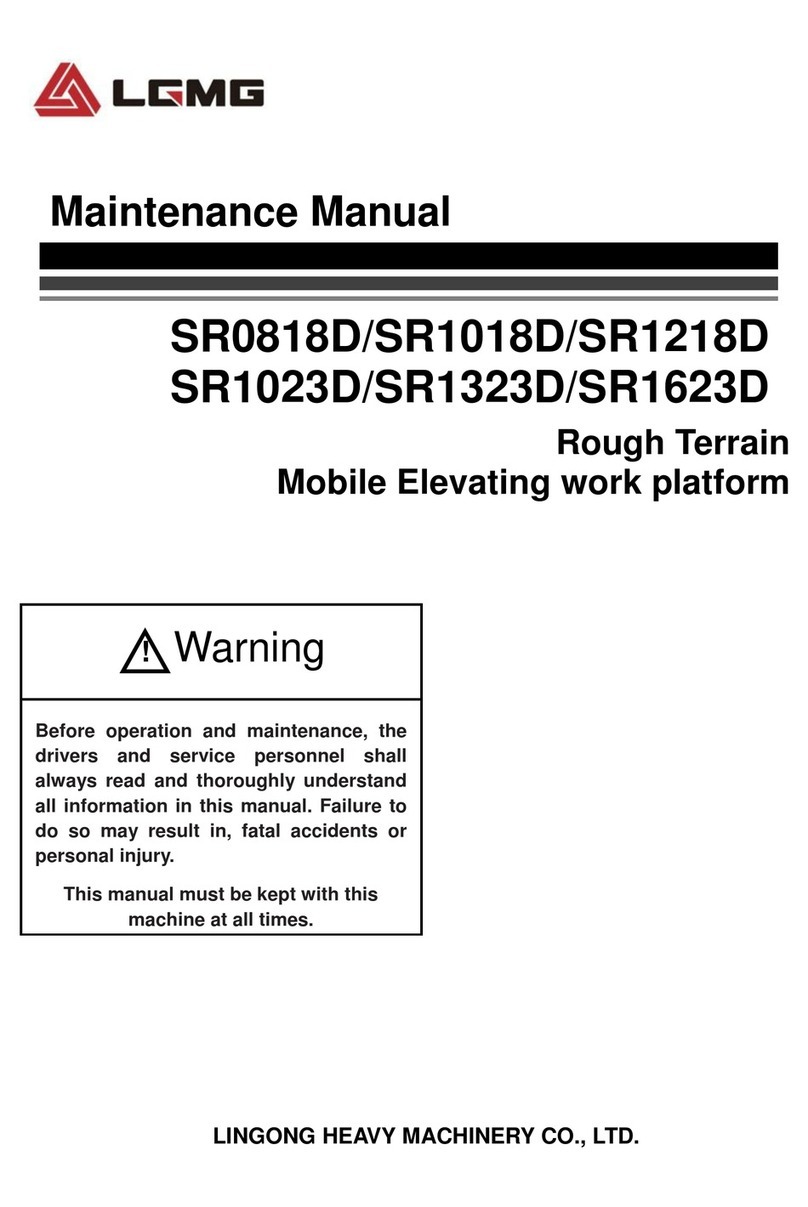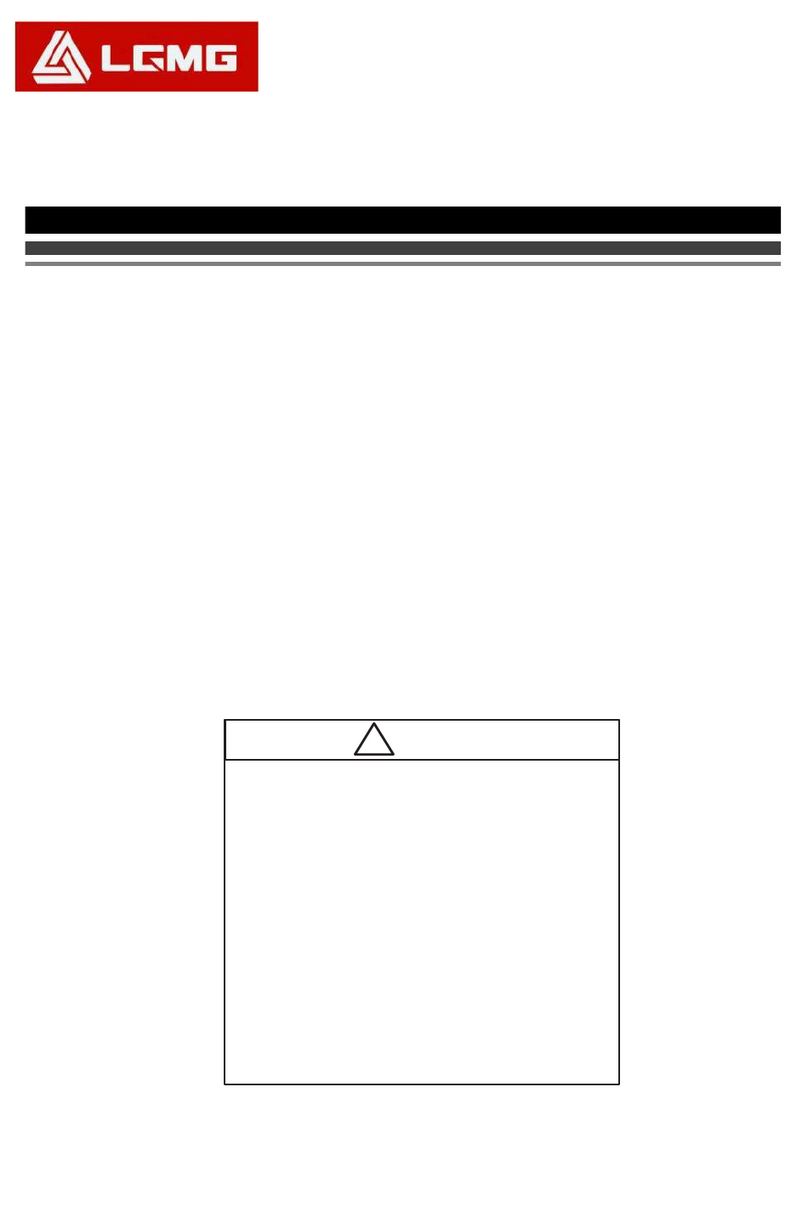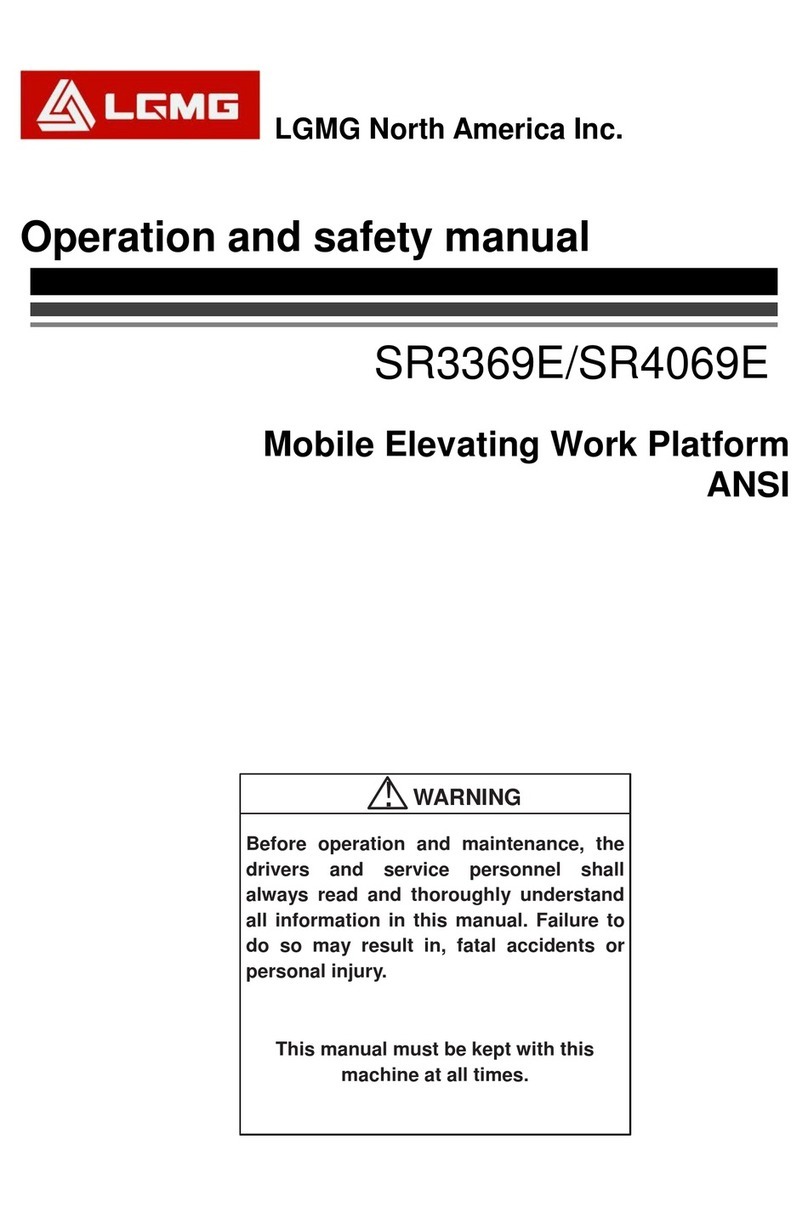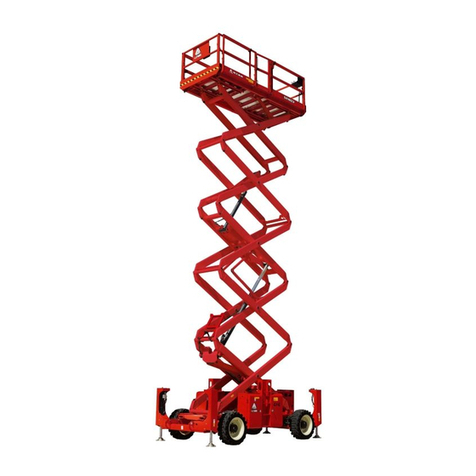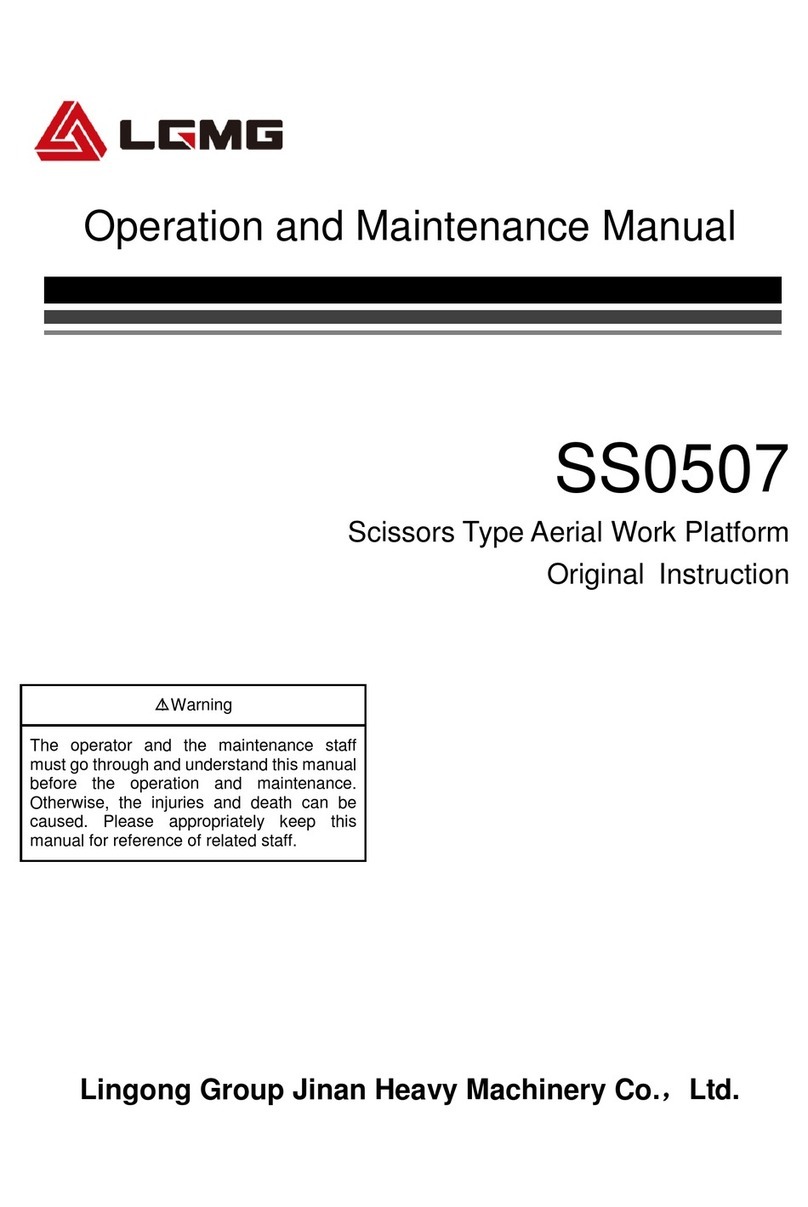
Operation Manual of Elevating work platform
4
their safety when replacing any missing or
damaged safety signs.
2) The safety decal should be cleaned with
mild soap and water.
3) Do not use solvent-based cleaners as they
may damage the material of the safety
label.
1.6 Risk of Electric Shock
1) This machine is not insulated and is not
provided with electrical shock protection
when it comes into contact with or near
electrical wire.
2) This machine should be kept an adequate
safety distance from power line and
electrical equipment according to
applicable government laws and
regulations and the following table.
3) The effects of strong winds or gusts on the
movement of the platform, the swinging and
slackening of the wires should be
considered.
4) If the machine comes into contact with live
wires, keep away from the vehicle. No one
is allowed to touch or operate the vehicle
on the ground or platform before cutting off
the power supply.
5) Do not operate the machine when there is
lightning or storms.
6) Do not use the machine as a ground wire
when welding.
1.7 Risk of Tipping
The personnel, equipment and materials on the
platform may not exceed the maximum load
capacity of the platform.
Maximum allowable
wind speed
Maximum platform
working load
1.8 Safety in the Work Area
1) The boom can be lifted or extended only
when the vehicle is on a solid, flat surface.
2) When the platform is lifted, drive speed
may not exceed 0.8km/h
3) The tilt sensor may not be used as a level
indicator. The alarm on the turntable will
sound only when the vehicle is heavily
tilted.
4) When the alarm sounds: Do not extend,
rotate or lift the boom beyond the horizontal
plane. The vehicle should be moved to a
solid, flat surface before lifting the platform.
If the alarm sounds when lifting the platform,
the boom should be telescoped carefully
and the platform should be lowered. Do not
rotate the boom during lowering. The
vehicle should be moved to a solid, flat
surface before lifting the platform.
5) For outdoor operation, do not lift the boom
when the wind speed may exceed 12.5 m/s.












